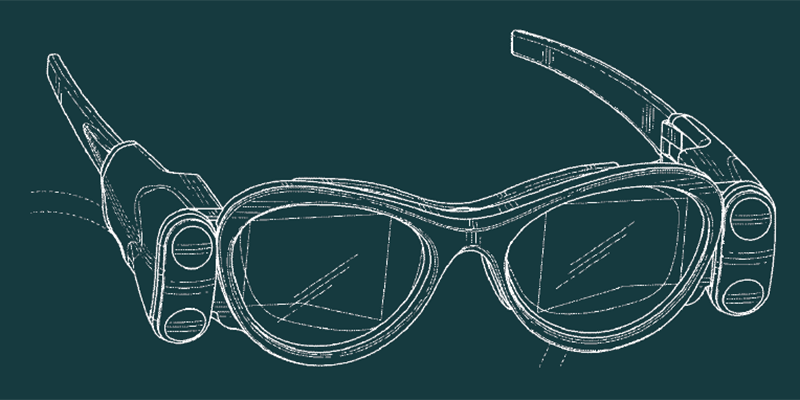Scientists from Harvard University and the Massachusetts Institute of Technology have proposed a new, electrochemical system for diagnosing diseases based on the detection of nucleic acids from DNA or RNA. Their platform could one day offer a faster and more accurate method to identify viruses, bacteria, and other pathogens ranging from the coronavirus to the bacterium that leads to Lyme disease.
The method, detailed in a May 6 World Intellectual Property Organization patent application, makes use of unique proteins that bacteria and other simple organisms ordinarily use to fight infections, serving a similar purpose as white blood cells. “Clustered regularly interspaced short palindromic repeats,” better known as CRISPR, resemble the genetic material of infecting pathogens that previously attacked the bacteria. A set of CRISPR-associated proteins can then use CRISPR’s genetic information to recognize and destroy future attackers.
Scientists have repurposed this simple immune response to cut and edit DNA or RNA at strategic locations so as to fix the mutations that cause genetic disorders. But although CRISPR-based technology has made waves for its wide-ranging uses in gene editing, including, controversially, in people, it has also been successful and highly accurate in detecting various diseases, providing a new mechanism for viral testing. To detect infections, researchers program the proteins to search for signs of a particular virus and light up if they locate pieces of the virus’ genetic material.
While most CRISPR-based diagnostic platforms, such as SHERLOCK and DETECTR, make use of fluorescence, or light emission, to signal an infection, the Harvard researchers instead programmed their proteins to respond to electricity. That means the device could test for viruses by evaluating voltage differences via ordinary, low-cost electrodes.
“We are in a pandemic, and one technology cannot meet the demand,” Pawan Jolly, a senior staff scientist at Harvard and a co-first author of the patent application, told The Academic Times. “We want to focus on what is needed right now, and what is useful for society and how we can actually have the impact.”
Despite some recent improvements, fluorescent systems suffer from several of the same drawbacks of other testing tools. They often require highly trained scientists to interpret results and rely on expensive, bulky equipment that cannot be easily transported. That’s why Jolly and his colleagues opted for electrochemical technology. Jolly thinks that electrochemistry methods will likely only become more affordable over time as technology companies continue to miniaturize circuit boards.
Scientists are especially interested in CRISPR associated protein 9, found in a species of Streptococcus bacteria. Cas9 can unwind unfamiliar nucleic acids and analyze their contents to see if they include genetic information that the bacteria recognizes as dangerous. If Cas9 determines that the foreign DNA is in fact from a pathogen, it can initiate a cutting sequence to destroy other invading DNA, thereby protecting the cell.
In 2020, scientists Emmanuelle Charpentier and Jennifer A. Doudna earned the Nobel Prize in Chemistry for using Cas9 to create programmable genetic “scissors” that can strategically cut nucleic acids at predetermined locations in order to alter the genes of living organisms. The technology may one day have applications as diverse as new cancer, cystic fibrosis and sickle cell disease treatments. CRISPR’s special properties mean it could also be used to develop crops that are more resistant to drought, disease and climate change.
But most diagnostic tools that scientists use to determine whether a person has been infected with a particular disease use a different subtype of enzymes — either Cas12 or Cas13.
“Cas12 binds to double-stranded DNA, and then it completely degrades single-stranded DNA that is nearby,” Helena De Puig Guixe, a postdoctoral researcher at Harvard and a co-first author on the patent application, told The Academic Times. Meanwhile, “Cas13 binds to RNA, and then it cleaves RNA.”
De Puig Guixe said her group’s new system is similar in sensitivity to a polymerase chain reaction, or PCR test — what she called the current “gold standard” in terms of accuracy — but much faster at delivering results. The patent application describes the team’s attempts to measure concentrations of the SARS-CoV-2 virus using its electrochemical apparatus. These methods could eventually be adapted for widespread use in COVID-19 diagnostics.
Prior to the coronavirus outbreak, the team had been working with Lyme disease detection, which it was able to achieve with high accuracy. Lyme disease is notoriously difficult to track, not necessarily because tests are inaccurate, but because a wide range of symptoms are associated with the infection. In addition, the disease’s tell-tale sign — a red band around the site of the infection — does not occur in a quarter of cases.
The Harvard researchers say their system could provide a more accurate alternative compared to what’s currently available for diagnosing Lyme disease: “To date, there are no reports of such a sensitive Cas-mediated detection system with an electrical readout,” they wrote.
And because of the highly customizable nature of Cas proteins as well as the proliferation of low-cost electronic chips, they think their technology could be adapted to address future pandemics as well as isolated outbreaks of lesser-known viruses.
“We want to make sure whatever we do from scratch is commercially viable and something that can be scaled up and have an impact,” Jolly said. “That’s what we find really motivating in our work.”
The patent application “On-chip assay strategy for the development of electrochemical readout for CRISPR Cas diagnostics” was filed Oct. 30, 2020 with the World Intellectual Property Organization. It was published May 6, 2021 with the application number PCT/US2020/058116. The earliest priority date was Oct. 31, 2019. The inventors of the pending patent are Pawan Jolly, Harvard University; Donald E. Ingber, Harvard University and Boston Children’s Hospital; and Helena De Puig Guixe and James J. Collins, Massachusetts Institute of Technology and Harvard University.
The article “New blood test could reveal undiagnosed ovarian cancer in thousands of women”, written by Miles Martin was first published in the Academic Times. Parola Analytics provided the technical research for this story.






